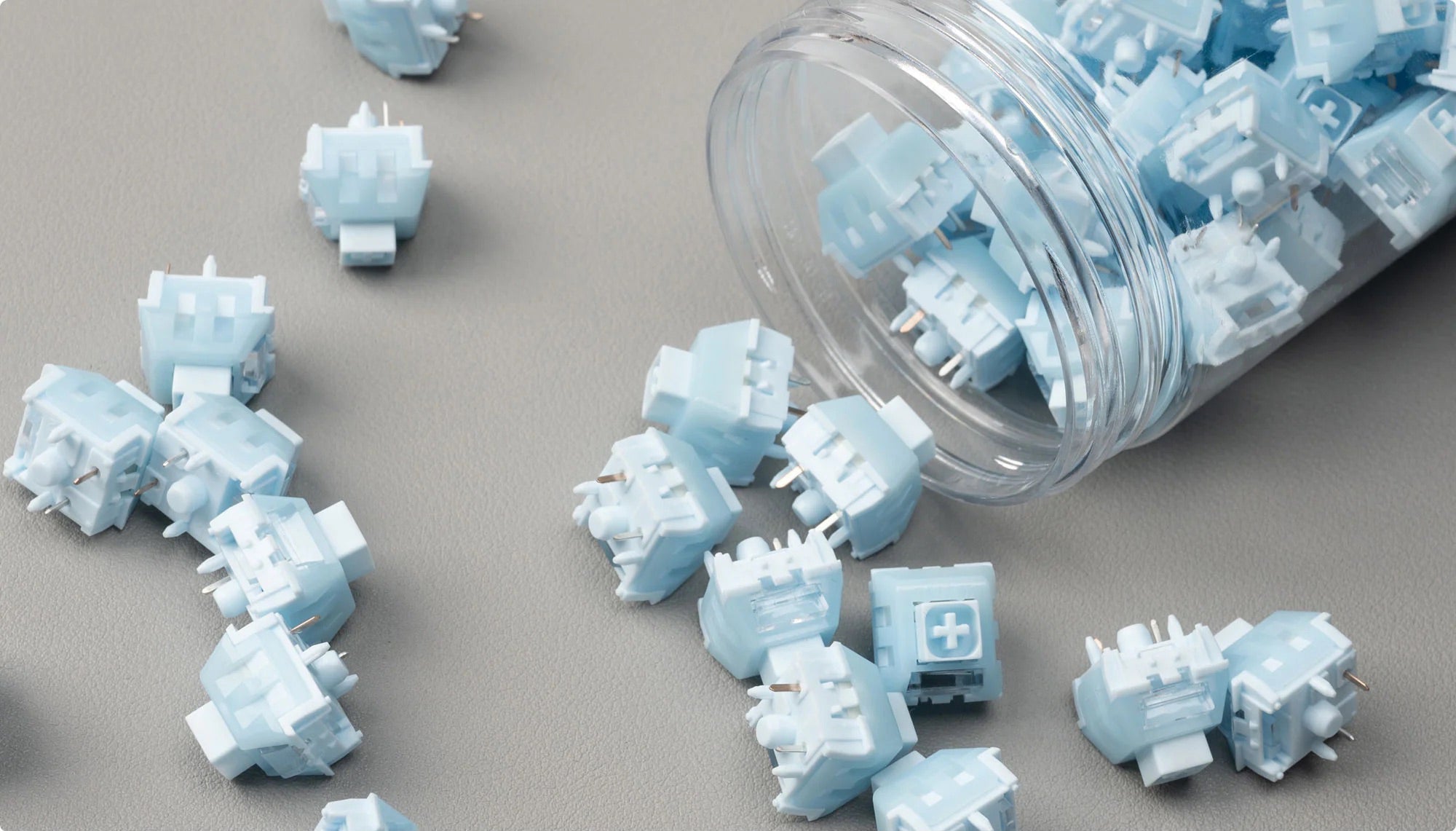Mechanical keyboards have evolved into a symphony of tactile sensations, offering users a range of switch types to suit their preferences and needs. In this guide, we delve into the four primary switch categories: Clicky, Tactile, Linear, and Silent, exploring the unique characteristics that make each type distinct.
1. Clicky Switches: A Symphony of Sound
Clicky switches are the rockstars of the mechanical keyboard world, known for their audible click with each keypress. This distinctive sound is accompanied by tactile feedback, providing a satisfying experience for typists. Kailh Summer and Autumn switches are popular examples, making them a favorite among writers who enjoy the auditory feedback and precise actuation.
Pros:
- Auditory feedback enhances typing experience.
- Tactile feel for precise key actuation.
Cons:
- Noisier compared to other switch types, may not be suitable for quiet environments.
2. Tactile Switches: Feeling the Pulse
Tactile switches strike a balance between clicky and linear switches. They provide a noticeable bump in the middle of the keypress, allowing users to feel exactly when a key has been actuated without the need for an audible click. Gateron G Pro 3.0 Brown and Kailh Winter switches exemplify this tactile elegance, making them suitable for both typing and gaming.
Pros:
- Tactile feedback for enhanced typing accuracy.
- Quieter than clicky switches.
Cons:
- Tactile bump might not be preferred by users who prefer a smoother keystroke.
3. Linear Switches: Smooth Operators
Linear switches are characterized by a smooth and consistent keystroke without any tactile bump or audible click. Popular among gamers, these switches allow for rapid and precise keystrokes. Gateron Oil King and North Pole 2.0 switches fall into this category, offering a seamless and uninterrupted typing or gaming experience.
Pros:
- Smooth and consistent keystrokes.
- Quietest option among mechanical switches.
Cons:
- Lack of tactile feedback may be less satisfying for some typists.
4. Silent Switches: The Stealthy Whisper
Silent switches combine the benefits of tactile or linear switches with a noise-reducing design, making them ideal for shared or quiet environments. They utilize dampening mechanisms to minimize the sound of keypresses without compromising on the tactile or linear feel. The Glacier Skyloong Silent Blue switch cater to users who crave a silent but responsive typing experience.
Pros:
- Reduced noise for a quieter environment.
- Retains the tactile or linear characteristics.
Cons:
- May not provide the same level of feedback as non-silent counterparts.
Conclusion
Choosing the right switch type is akin to selecting the perfect instrument for a symphony. Whether you're drawn to the audible click of a clicky switch, the subtle pulse of a tactile switch, the smoothness of a linear switch, or the silent whispers of a silent switch, there's a mechanical keyboard switch tailored to your unique preferences.






